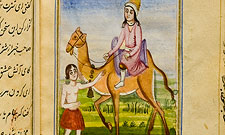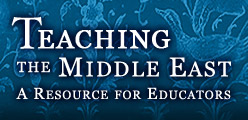Module Overview
Explore the development of the Qur’an and Qasida, the rise of Arabic verbal arts, the renaissance of Persian and Turkic languages, and literary engagement with the challenges of colonialism and modernity.
Essay
- Introduction
- The Age of Voice (622–750 CE)
- The Age of the Book (750–1100 CE)
- Civilization and Crisis (1100–1500 CE)
- Three Empires (1500–1900 CE)
- Modernity and the Road to Independence (1900 CE–present)
Framing the Issues
- What Comprises the Qur’an?
- Is the Literature of the Middle East Arab and/or Muslim?
- Can We Find a Unifying Theme in Middle East Literature?
Examining Stereotypes
Image Resource Bank

Majnun and Layla represent the classical tragic lovers in the classical Middle East tradition, and have been compared to Romeo and Juliet... [IMAGE GALLERY]
Learning Resources

 Michael Sells
Michael Sells
John Henry Barrows Professor of Islamic History and Literature, Divinity School, The University of Chicago
Classroom Connections
LESSON 1: Religion and the Written Word in Islamdom and Christendom
LESSON 2: The Expansion and Influence of Muslim Literature 600–1600 CE



